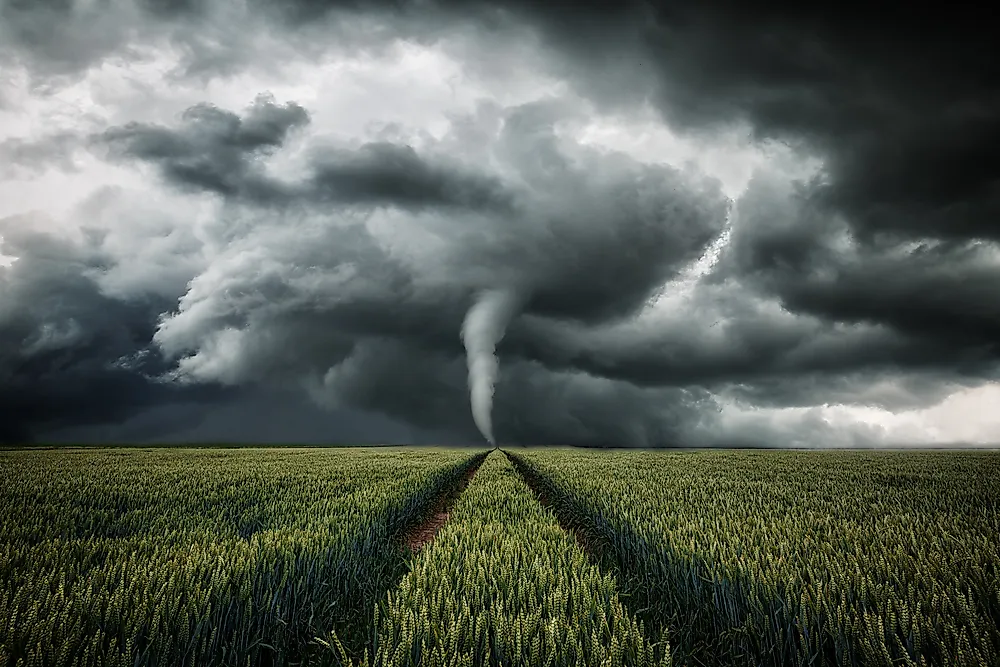What is a Tornado?

A tornado is an air column rotating at immense speeds that is in contact with the earth’s surface and a cumulonimbus cloud. Sometimes, although rarely, the air column might also be in contact with a cumulus cloud’s base. Tornadoes vary in shapes and sizes but they are often observable as a condensation funnel that starts at the bottom of a cumulonimbus cloud and has a cloud of spinning materials beneath. Mostly, the width of tornadoes does not exceed 80 miles whereas the speed hardly goes beyond 110 miles per hour. Regarding the distance a tornado travels, they usually travel for a few miles and then dissipate. However, in extreme cases, tornadoes can travel at a destructive speed of above 300 miles per hour, have a width of more than two miles, and travel a distance of more than 62 miles. Tornadoes closely resemble gustnadoes, dust devils, fire whirls, and steam devils.
Formation of a Tornado
Technically, a type of thunderstorm known as supercells is what leads to the development of a tornado (including the most powerful tornadoes). Within the supercell, there is an air vortex known as a mesocyclone. As the mesocyclone moves down beneath the cloud, the air takes in cool and moist air from the lower sections of the storm. When the cool air comes together with warm air travelling upwards, the result is the creation of a low-pressure point at the surface that begins to pull the whole system down towards the surface of the earth. This puling action is what eventually leads to the visible funnel-shaped force that is known as a tornado.
The destructive nature of the tornado is primarily from something called the rear flank downdraft (RFD). The RFD directs the base of the mesocyclone such that it assumes a funnel shape. When the funnel shape touches the earth, the RFD begins to move outwards leading to the creation of the powerful and destructive blasts of wind. In some cases, however, a tornado can form and have a different shape. In addition, there are destructive winds that resemble a tornado but are not classified as tornadoes since a tornado must have contact with both the cloud’s base and the earth’s surface.
Types of Tornadoes
Multiple Vortex
Mostly observable in powerful tornadoes, this type of tornado is where there are two or more spinning air columns having a common center. Naturally, these extra vortices will cause more destruction compared to those that do not have multiple vortices. This type should not be confused with a satellite tornado, which is a smaller tornado forming close to a larger tornado.
Waterspout
Simply defined, this is a type of tornado that forms over water. There are waterspouts that are tornadic and those that are classified as “fair weather.” Fair weather ones are more common although less powerful compared to the tornadic ones. Tornadic ones are extremely dangerous as they have more power and last longer.
Landspout
This type of tornado is unassociated with a mesocyclone. Landspouts share many similarities with waterspouts such as less intensity and a short life. In some cases, the gusts of wind created can cause some major damage.











